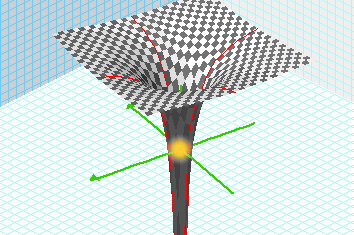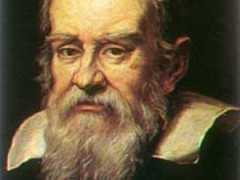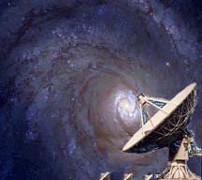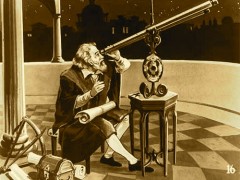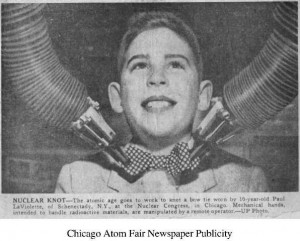Author Archives: luxus
Detailed Projects List
THE STARBURST FOUNDATION PROJECTS
(March 2011)
Potential donors wishing cost estimates for any of these projects
are requested to email their request to the Starburst Foundation
The following are projects that Starburst has plans to pursue:
1) The Pleistocene extinction. Dr. LaViolette's paper presenting evidence that the Pleistocene megafaunal extinction had a solar flare cause has been published in the June issue of the journal Radiocarbon;(1) see press release. LaViolette needs funds to attend a scientific conference to present its findings.
2) Ice core and ocean sediment analysis to study the solar flare event that terminated the Pleistocene extinction episode. As a follow up to the discoveries published in study (2) above,(1) Starburst would like to carry out a detailed chemical analysis of Greenland ice and ocean sediment cores to look for evidence that the Pleistocene extinction was terminated by an intense solar cosmic ray storm and that this event was also responsible for depositing ET indicators found in the YDB layer at the base of the black mat in the southwestern U.S. and in the Usello Horizon in Europe. P. LaViolette has identified an acidic layer in the Summit, Greenland polar ice core record that dates around 12,887±10 years before 2000 (b2k) which he believes registers the impact of a solar coronal mass ejection strong enough to overpower the Earth's magnetosheath and allow vast quantities of solar cosmic ray radiation to enter the atmosphere and produce lethal radiation levels at the Earth's surface. For this project we would measure the concentrations of cosmic dust indicators such as iridium, nickel, and gold in 20 samples spanning this part of the ice record. This could be done by using either neutron activation analysis or inductively coupled plasma mass spectrometry. We would also carry out a scanning electron microscope study of the dust found in this part of the ice core to search for the presence of cosmic spherules similar to those found in the YDB layer overlying the terminal extinction boundary. Further, we would analyze the beryllium-10 concentrations in these samples using accelerator mass spectrometry. We also would like to measure radiocarbon and Be-10 concentrations in 6-month sample intervals spanning two sections of the Cariaco Basin ocean sediment record corresponding to the 12,887 and 12,689 years b2k radiocarbon spurts. These two projects would be conducted with other researchers expert in Be-10 and radiocarbon analysis. It is expected that the study could take two years to plan and complete.
3) Publishing papers on climatology/geology. With proper funding, Dr. LaViolette could publish additional scientific papers about Galactic superwaves and their effects on the Earth's climate and biosphere. See references 2-13 for past publications. He has several papers that are in the process of being made ready for publication. These present the following:
a) a discussion of his discovery of heavy metals in polar ice (tin, antimony, gold, silver, and iridium whose results were presented in his dissertation, but never published,
b) Evidence of solar-induced global warming at the end of the last ice age, and that this warming was caused by the passage of a Galactic superwave,
c) A discussion of the glacier wave concept of continental flooding and the new interpretation it offers for Heinrich events.Once these papers are written and edited they would be ready to be submitted for publication. They may encounter substantial resistance from conservative climatology and geology journals since their proposed hypotheses challenge existing climatological, geological, and astronomical theories.
4) Superwave periodicity. With the volunteer help of a company in Seattle, Starburst has conducted a fast Fourier transform analysis of beryllium-10 peaks found at various depths in the Vostok ice core. This has allowed us to estimate the periodicity of superwaves. Analysis should also be performed on the Vostok ice core data that Liritzis and Grigori analyzed to compare with the periods that they have reported. The findings need to be written up and published in a scientific journal.
5) Communicating the superwave theory. Additional funds would support Starburst's efforts to network with other scientists who are doing work relevant to the superwave theory and to present papers on the superwave theory at scientific conferences. Starburst will also contact Federal government personnel to make them aware of the superwave phenomenon. Starburst also would like to continue the updating of Dr. LaViolette's Ph.D. thesis which is available on CD.
6) Public relations. Writing and sending out press releases about LaViolette's discoveries, contacting the media, emailing scientists preprints of LaViolette's papers.
7) Networking with alternative technology groups and superwave survival groups. A part time volunteer assistant could be hired to network with groups around the world who are preparing alternative technologies that will assist independent living (energy and food independence) and to network with groups preparing for superwave survival. Although there is no definite indication of claims that a superwave will arrive in 2012, it is advisable to encourage preparedness. This project could also be responsible for networking with prayer groups around the world to be ready to organize mass prayers in the event of a superwave arrival.
8) Public lecturing. Public lectures could be organized that would inform people about galactic superwaves, subquantum kinetics, and exotic energy and propulsion technologies. This budget would include traveling and lodging expenses not covered by the lecture host and time for the speaker to prepare the lecture.
Simulations
Computer Simulation Gallery
A series of simulations of the Model G reaction system
Simulations carried out by Matt Pulver.
Particle Creation
3D simulation showing a subatomic particle forming from an X potential ZPE fluctuation
This is a one-dimensional cross section of a spherically symmetric particle extending radially in three dimensions. Simulation parameters: Reaction volume radius = 50 spatial units, vacuum boundary conditions, X potential seed fluctuation: 1 sigma in space, 3 sigma in time.
.
3D simulation showing subatomic particle autogenesis (vertically expanded view)
This is a one-dimensional cross section of a spherically symmetric particle extending radially in three dimensions. Simulation parameters: Reaction volume radius = 50 spatial units, vacuum boundary conditions, X potential seed fluctuation: 1 sigma in space, 3 sigma in time.
.
3D simulation showing particle with higher core diffusion coefficient
This is a one-dimensional cross section of a spherically symmetric particle extending radially in three dimensions. Simulation parameters: Reaction volume: 3D, Radius = 50 spatial units, vacuum boundary conditions, X potential seed fluctuation: 1 sigma in space, 3 sigma in time. Diffusion coefficient = 2 at center and decreases to 1 with sigma = 1.5 spatial units.
.
3D simulation showing particle with lower core diffusion coefficient
This is a one-dimensional cross section of a spherically symmetric particle extending radially in three dimensions. Simulation parameters: Reaction volume radius = 50 spatial units, vacuum boundary conditions, X potential seed fluctuation: 1 sigma in space, 3 sigma in time. Diffusion coefficient = 0.5 at center and increases to 1 with sigma = 1.5 spatial units.
.
2D simulation showing a subatomic particle forming from an X potential ZPE fluctuation
This is a one-dimensional cross section of circularly symmetric particle extending radially in two dimensions. Simulation parameters: Reaction volume radius = 50 spatial units, vacuum boundary conditions, X potential seed fluctuation: 1 sigma in space, 3 sigma in time.
.
1D simulation showing a subatomic particle forming from an X potential ZPE fluctuation
This is a one-dimensional plot of a particle formed in a one-dimensional reaction volume. Simulation parameters: Reaction volume radius = 50 spatial units, vacuum boundary conditions, X potential seed fluctuation: 1 sigma in space, 3 sigma in time.
.
1D simulation showing a subatomic particle forming from a G and X potential ZPE fluctuation
This is a one-dimensional plot of a particle formed in a one-dimensional reaction volume. Simulation parameters: Reaction volume radius = 50 spatial units, vacuum boundary conditions, X potential seed fluctuation: 1 sigma in space, 3 sigma in time.
Next Page: Particle Bound States
Starburst Foundation Profile
The Starburst Foundation is a nonprofit research institute based in Schenectady, New York and Athens, Greece.
It was incorporated in the state of Oregon in January of 1984 for the purpose of carrying out scientific research and public education directed to the betterment of humanity and the planet. The Foundation's research activities are carried out with the intention of:
- preserving and protecting the ecosystem of our planet from natural or man-made disturbances,
- promoting technologies that would improve our everyday life, and
- improving our understanding of ourselves as human beings and our comprehension of the universe of which we are an integral part.
Starburst serves as a vehicle through which donors may support high-quality leading-edge research necessary to mankind's survival in this new age.
Purpose of Starburst Foundation
Purpose of the Starburst Foundation
 History has shown that the most significant scientific breakthroughs were not deduced from the existing theoretical framework, but rather arose as marked departures from conventional thinking. Generally such new views challenged long-cherished assumptions espoused by the established paradigm and were therefore actively resisted by the old guard.
History has shown that the most significant scientific breakthroughs were not deduced from the existing theoretical framework, but rather arose as marked departures from conventional thinking. Generally such new views challenged long-cherished assumptions espoused by the established paradigm and were therefore actively resisted by the old guard.
The peer review process, which normally is relied on to determine which ideas out of the many should become funded, is often subject to this bias. As a result, new ideas that could potentially produce scientific breakthroughs are generally refused funding. Thus most work carried out in today's research institutions tends to be traditional, rather than innovative.
The Starburst Foundation was formed to circumvent this problem. It serves as a vehicle through which donors may fund high-quality leading-edge research that otherwise would have great difficulty finding financial support. By greasing the wheels of change, the Starburst Foundation helps to create new concepts and tools necessary to mankind's survival in the new age that is now upon us.
Black Holes - Mother Stars
The Milky Way's Supermassive Core Sgr A*
Gravity well surrounding the Galactic core
Outside the supermassive core, the gravity potential field
varies inversely with radial distance (φG ~ 1/r) as shown above.
But inside, it varies approximately as r2, plateauing at the core's center.
The luminous cosmic ray emitting source at the center of our Galaxy is a celestial orb that is about 4.3 million times the mass of our Sun and the most massive object in our Galaxy. Currently it is seen to radiate about 20 million times as much electromagnetic energy as our Sun. By one estimate, it radiates most of its energy as cosmic ray electrons and protons, giving it a total luminosity 2.5 billion times that of the Sun (LaViolette, Subquantum Kinetics, 2012). Based on early radio observations, it was given the designation Sagittarius A*.
Stars orbit this body with velocities as high as 50% of the speed of light. Gas and dust also orbits Sgr A* but does not fall toward it. It is instead seen to be moving radially outward from this source. After long intervals, the matter/energy generation process within the Sagittarius A* becomes unstable and it explodes with intense luminosity. Such galactic core explosions pose a potential threat to our planet.
Donations
Starburst: A Catalyst For Change
Would Galileo be able to pursue his hypothesis today?
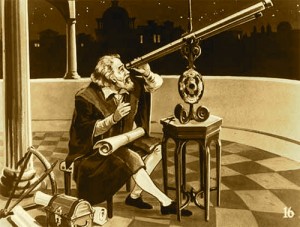 History has shown that many of man's greatest discoveries came about because someone dared to challenge the assumed knowledge of the time.
History has shown that many of man's greatest discoveries came about because someone dared to challenge the assumed knowledge of the time.
The path which such visionaries followed was by no means easy since members of the old guard fought them at every turn.
Were it not for the generous support private wealthy patrons gave to these innovators, timely scientific breakthroughs would have been lost.
Since Galileo's days, modern society unfortunately has made little progress in facilitating the funding of new ideas.
Today's institutionalized funding process consistently rewards conventional thinkers and works against the maverick whose research starts from a different hypothesis.
Even the most rigorous standards and most carefully wrought data cannot overcome the resistance built into the peer review system.
Consequently most work carried out in today's research institutions tends to be traditional, rather than innovative.
The Starburst Foundation was formed to circumvent this problem.
The Present Need For Funds
Starburst needs funds to support ongoing scientific research activities spanning many disciplines.
Money is also needed to finance our research, participation in scientific conferences, information networking with government and research organizations around the world, public lectures, and video documentary production.
Donate $50 or more and receive a gift video about the continuous creation of the universe.
Those interested in sending their donation by mail may make out a check to the Starburst Foundation and mail it to:
1176 Hedgewood Lane
Niskayuna, NY 12309
Click below to send a donation:
Subscribe for a $20 recurring donation:
Subscribe for a $50 recurring donation:
Subscribe for a $100 recurring donation:
Letters of Support
Letters of Support
Superwave Theory
• Letter from Senator Packwood to the U.S. National Science Foundation
• Letter from Senator Packwood to the U.S. National Science Foundation
• Letter from Christopher Lehman, Special Assistant to the President
• Letter from Dr. Korotkovitch (Leningrad) to the National Science Foundation
• Letter from Senator Kennedy of Massachusetts
• Letter from Sir Crispin Tickell UK Mission to the UN
• Letter from Wilbert Chagula, Tanzanian ambassador to the UN
Cosmology
• Letter from professor Georges de Vaucouleur, University of Texas, Austin
• Letter from professor Jean-Claude Pecker, College of France
• Letter from professor Jean-Pierre Vigier, director of research CNRS
• Letter from Grote Reber, father of radio astronomy
• Letter from professor Paul Marmet, National Research Council of Canada
• Letter from professor Dean Turner, University of Northern Colorado
Feeling Tone Theory
• Letter from professor Karl Pribram, Neuropsychology Laboratory, Stanford University
• Letter from professor Walter Freeman, Division of Neurobiology, UC Berkeley
• Letter from professor Richard Rowan, Director of Counseling Services, The Evergreen State College
• Letter from Dee Dickinson, Coordinator, New Horizons for Learning
• Letter from Hazel Henderson, Co-Director, Princeton Center for Alternative Futures
Aerospace Technology: NASA Space Plane Correspondence
• Letter from Charles Morris, Asst. Dir. NASA Aero-Space Plane Program
• Letter to Charles Morris, Asst. Dir. NASA Aero-Space Plane Program
Requests for Information
• Institutional affiliations of people requesting information on Starburst research (1984-1989)
Paper Archive
Paper Archive
Physics/Cosmology
- The nonvelocity cosmological spectral shift (accepted 2021)
- Expanding or static universe: Emergence of a new paradigm. (accepted, 2021)
- The Origin of Gravity and Its Effects. (to appear 2021 in the book The Origin of Gravity from the First Principles.
- Explanation of Model G in subquantum kinetics (2020)
- The transmuting ether paradigm of subquantum kinetics: A physics for the Twenty-first century. (World Futures, 2015)
- Stationary dissipative solitons of Model G (Intl. J. General Systems, 2013)
- The cosmic ether: Introduction to subquantum kinetics (Physics Procedia, 2012)
- Prediction of the nucleon charge distribution (Intl. J. General Systems, 2008)
- A paradigm shift for a new energy awakening (2007)
- Early prediction of the Pioneer effect (Physics Essays, 2005)
- The matter of creation (Physics Essays, 1994)
- Photon blueshifting/planetary-stellar mass-luminosity relation (Physics Essays, 1992)
- Violation of the First Law (IECEC Conference Proceedings, 1991)
- Is the universe really expanding? (Astrophysical Journal, 1986)
- An introduction to subquantum kinetics: Part I (Intl. J. General Systems, 1985)
- An introduction to subquantum kinetics: Part II (Intl. J. General Systems, 1985)
- An introduction to subquantum kinetics: Part III (Intl. J. General Systems, 1985)
Early Precursors to Subquantum Kinetics: Unpublished Papers [of interest from a history of science perspective]
- Cosmogenesis: The Alpha and the Omega (1974, unpublished)
- Toward a Prehensive Model of Space (1976, unpublished)
- Entropy and Negentropy (1976, unpublished)
- The Alchemic Ether Model: An Organic Conception of Physical Space [excerpts] (1978, unpublished)
Astronomy/Climatology/Glaciology/Paleontology
- The generation of mega glacial meltwater floods and their geologic impact (2017)
- The episodic influx of tin-rich cosmic dust particles during the last ice age (2015)
- Evidence for a solar cause of the Pleistocene mass extinction (2011)
- A galactic superwave hazard alert (Nexus Magazine, Australia/UK/U.S., 2001)
- A galactic superwave hazard alert update (Nexus Magazine, Germany, 2009)
- The Cause of the Megafaunal Extinction:Supernova or Galactic Core Outburst?(2008)
- Periodic solar cycle acidity variations in ice age polar ice (Planetary & Space Sci, 2005)
- Evidence for global warming at the end of the ice age (2005)
- Anticipation of the Ulysses interstellar dust findings (Eos, 1993)
- Galactic core explosions and the evolution of life (Anthropos, 1990)
- Regarding the validity of polar trace metal data: A response (Monthly Notices, 1988)
- The cometary breakup hypothesis re-examined (Monthly Notices, 1987)
- Cosmic ray volleys from the Galactic center and their impact on the Earth environment (Earth, Moon, Planets, 1987)
Harvard ADS system reference - The discovery of cosmic dust in ice age polar ice (Meteoritics, 1983, 1985)
Prebiotic Evolution, SETI
- Autopoietic gene-enzyme cycles and the emergence of life (Keynote Paper) (J. Biological Systems, 2014)
- Are radio pulsars extraterrestrial communication beacons? (J. Astrobiology & Outreach, 2016)
Aerospace Propulsion Technology
- Proposal to NASA: Electrogravitics -- An energy efficient means for spacecraft propulsion (1990)
- Letter to the Columbia Accident Investigation Board describing a technology that could avoid future space shuttle accidents (2003)
Alternative Energy Technologies
-
- Moving Beyond the First Law and Advanced FieldPropulsion Technologies
- The Reality of Overunity Generators: Evidence for an Open-System Universe (2013)
- Construction and testing of a high efficiency solar water still (2005)
- How the Searl Effect works: An analysis of the Magnetic Energy Converter (2001)
Stock Market Theory
- The predator-prey relationship and its appearance in stock market trend fluctuations. (General Systems, vol. XIX, 1974; Systems & Management Annual, 1975)
Tracing the Origins of Subquantum Kinetics
Tracing the Origins of Subquantum Kinetics
by Paul LaViolette
In memory of my father, Fred G. LaViolette (1916 - 2008)
© 2008, P. LaViolette
Click here to download a pdf of this essay
As in nature, it is not just the seed that matters in the germination and growth of a new sprout, but also the soil, the seed's environment. If the soil is not fertile and periodically saturated with water, the sprout will eventually wither and die. This too is the reality of how all great ideas are developed. We are all familiar with the life of Amadeus Mozart and the great supporting role his father played in the early flowering of Mozart's career. Were it not for the fertile environment that Amadeus's father provided perhaps the life of this gifted young composer would have taken a different turn and we would not today be enjoying the many sonatas and symphonies that Mozart produced.
Subquantum kinetics, today at least, certainly is not as widely known as Mozart's works. But what was true of Mozart's creative life was also true of mine. The fertile environment that both my parents provided, and in particular the early mentorship my father gave me, played an essential role in my ultimate development of subquantum kinetics. Below I will summarize how this unique family experience helped to facilitate the development of this important new approach to physics.
I grew up in a family of scientists. My father, Fred LaViolette, was a physicist and electrical engineer specializing in nuclear reactor engineering at the General Electric Knolls Atomic Power Laboratory (KAPL). My mother, Irene, was a chemist who had formerly worked at duPont. Before I was born, both had worked in Richland, Washington on the Manhattan Project. During my preschool years I was picking up on the ins and outs of the workings of nuclear reactors, getting a rudimentary understanding of nuclear decay and transmutation, nuclear cross-sections, and so on. Around the dinner table I would absorb all that he had to say about his research and engineering tasks at work, and as a youngster I asked him many questions. During the first years of my life, he was working on the breeder reactor project, an attempt to design a nuclear reactor that would produce more nuclear fuel than it burned up. Under the dictates of Admiral Rickover, this later evolved into a program to build the world's first sodium cooled reactor for powering a nuclear submarine. This was eventually installed in the U.S.S. Seawolf which operated successfully for many years.
My father's mentorship was a great stimulation for me, as was the experience of seeing the KAPL facilities first hand during a weekend public "open house". By the age of eight I was doodling nuclear reactor systems complete with their cooling loop, turbine, and generator. At the age of 10, I accompanied my father on a long train ride to Chicago to attend the March 1958 Atom Fair. While he sat in on technical lectures conveying the latest developments in nuclear power engineering, I would wander through the immense exhibit hall visiting one exhibit booth after another with their interesting displays and models. There I learned about rare earth elements, fuel rods, reactor core design, and such things. A few times, even poked my head into the highly technical slide talks. Being the only young fellow on the floor, I was soon approached by newspaper photographers who were looking for a story angle and were eager to get shots of me viewing the booths. The following days I found my picture appearing in two Chicago newspapers, my first ever press coverage.


